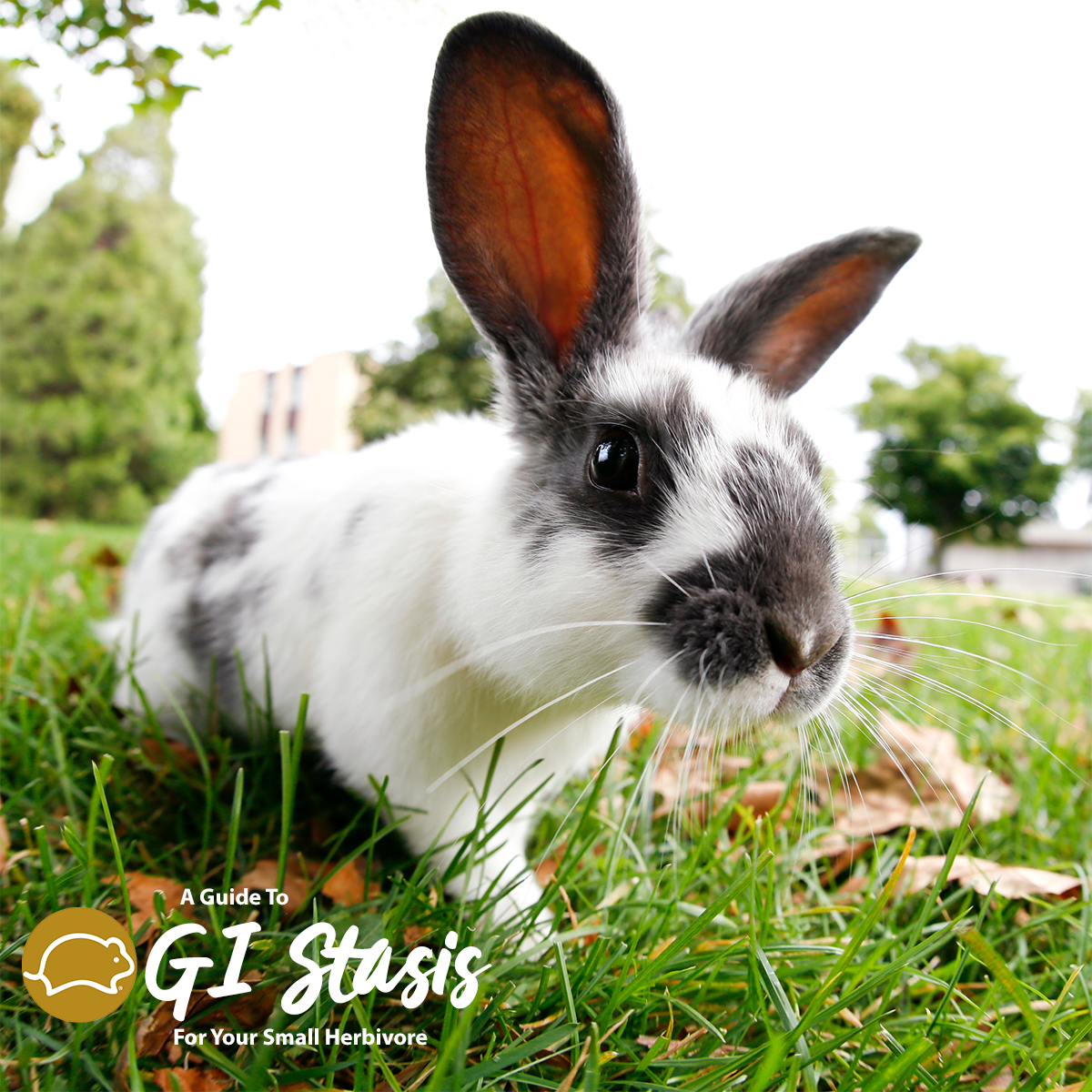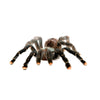What Is Gastrointestinal Stasis in rabbits and how do we prevent It?
Gastrointestinal Stasis (aka GI Stasis) happens when food slows down or stops moving through an animals gastrointestinal tract. Pets that can be affected by GI stasis include (but are not limited to) rabbits, guinea pigs, chinchillas, and degus. Herbivores have a digestive tract that moves like a motor. It is constantly going and needs fuel (i.e. hay) to run. This is why herbivores need access to hay all the time (think of a cow grazing!). GI Stasis is a dangerous and potentially fatal situation for your pet. If caught in time, GI Stasis can be prevented and treated. However, it’s important to understand the signs and act fast. If you suspect that your pet has GI stasis, don’t wait! Call your vet as soon as possible.
What Are the Causes and Signs of GI Stasis?
Your herbivore needs a high fibre diet as well as plenty of water. Without those elements, impacted material will sit in the gut, becoming unmovable and creating bacteria. This can lead to constipation and painful gas in your pet.
Common causes of GI Stasis include:
- a low-fibre diet,
- dehydration,
- a secondary infection (such as an Upper Respiratory Infection),
- a blockage,
- stress (stress hormones may influence gut function),
- a lack of gut mobility due to inactivity.
Understanding the cause and symptoms of the condition is your best defence.
Common symptoms to watch out for include:
- Decreased or no appetite,
- Decreased or no droppings,
- Smaller, dry droppings or dry droppings that are not uniform in shape,
- Diarrhea,
- Mucus in the droppings,
- Bloating,
- Abdominal pain when the abdomen is touched,
- Teeth grinding and other stress responses,
- Squinted eyes even when relaxed,
- Weakness or lethargy,
- Hunched posture,
- Lower body temperature or cold extremities,
- Watery eyes.
How Do I Prevent GI Stasis?
Hay, Hay, And More Hay!
The most important thing that you can do for your herbivore pets is to make sure that they are eating a proper diet. While this may look slightly different depending on the pet, the most common theme is that herbivores need a constant supply of fresh hay. Did you know that these small herbivores ideally should be eating their body size in hay every DAY? As we previously mentioned, their digestive tracts operate like motors, and what does a motor need to run? Fuel! In the case of your pet, hay is their fuel! Timothy hay is the tried-and-true staple in most small herbivore homes. This hay is the standard and can be fed as part of their staple diets. When in doubt, always choose timothy hay. You can find a link to our selection of hay here. We have a blog post entirely dedicated to the different types of hay and what they are used for, so click here for more information!
Small herbivores have slightly different diets depending on which pet you have. Rabbits and guinea pigs require daily salads, while chinchillas have a very specific diet that can’t include vegetables. Did you know that degus are prone to diabetes? This means that they can't have anything with sugar in it. For more information on your pets specific diet, check out our rabbit tip sheet, our guinea pig tip sheet, our chinchilla tip sheet, and our degu tip sheet.
Proper Hydration:
Herbivores need adequate hydration to digest their food properly. Provide your pet with an easily accessible water bottle in its cage, and then monitor it to make sure that it drinks. It’s also important to remember that some pets will prefer to drink from a dish rather than a bottle (especially rabbits). Offering your pet both options is a good way to ensure that they are drinking enough water (because of the nature of Chinchilla fur density, it is not recommended to offer your Chinchilla a water dish as getting their fur wet can make them sick too!). It is important to offer a water dish that is heavy enough that your pet will not tip it over (rabbits seem to really love to throw those dishes around!). Two products we really like would be the M-Pets glass drinking bottle and the ceramic two tone pet bowl.
Illnesses:
One of the most common illnesses in small pets is Upper Respiratory Infections (URI). URI’s come in all shapes and sizes, so it is important to know what to look out for. The most common symptoms include (but are not limited to) eye discharge, nasal discharge, sneezing, wheezing, and low appetite. A URI does not necessarily mean GI Stasis, however, if a URI is left untreated, it can often trigger GI stasis. Rabbits are especially prone to URI’s (often times chronic rabbit URI’s are called “snuffles”) which can be incredibly dangerous if passed on to other small herbivore species. It is always best to keep your pets separate, but take special caution when it comes to any contact between rabbits and other small pets. It’s good practice to wash your hands before and after interacting with any of your pets.
Blockages:
Herbivores will chew on EVERYTHING. It is very important that you pet proof any area of your home that they may be exploring. It’s also important that you are taking everything you keep in your pets habitat into careful consideration. Plastic is a major offender when it comes to internal blockages in small herbivores (particularly in Chinchillas and Degus). It is recommneded to opt for wooden or metal cage accessories for these critters instead of plastic. Always make sure your pet is being supervised when outside of their habitat. Check out our safety tips and household hazards tip sheet here.
Minimize Stress:
It is also critical to provide your pet with options for stress management. It’s important to remember that a lot of small herbivores are naturally prey animals, so it is important that they feel comfortable in their home. It may be a good idea to keep them separated from your larger pets (such as cats and dogs) to help them feel more comfortable (even if you're sure that your cat or dog will not harm them). It's crucial that they have multiple safe hiding spots to make them feel secure as well. One of our favourite hide-outs for the smaller herbivores would be the moss hollow tree twigs lounging logs. This house is not only sturdy, it is also safe for your pets to chew on (believe us, they will chew it). Rabbits tend to get a little too big for most small animal homes, so sometimes you will have to improvise. Something that a lot of bunny owners do is use cat hides instead as some rabbits are more similar in size to cats instead of guinea pigs. We really like using the pawise pop up play cube, as it is very easy to wash!
Exercise:
It is very important that your pet has out of cage time. If your pet spends too much time just laying around, whether it is because of laziness or lack of space, this can cause their GI tract to not move as quickly, thus increasing their risk of GI stasis. It's important that they get out of cage time every day, not only because they want to spend time with you, but because they need to be able to run around and move! As always with these types of pets, the bigger the cage, the better. If you are unable to let your pet out in a pet proofed room, consider purchasing an exercise pen to keep them contained. A large pen like that is actually an ideal home for your rabbit, as they get a lot more space to move around in than a cage (they're easier to clean, too!).



